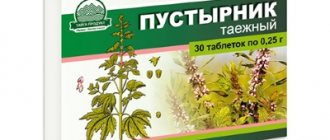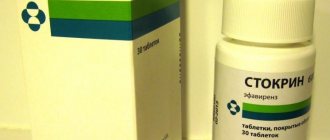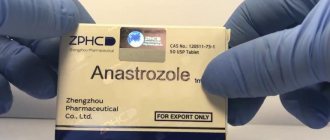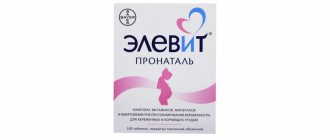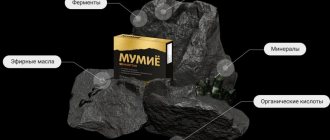This substance has truly unique properties:
- Reacts with free radicals, converting them from destructive substances into normal metabolic products;
- Neutralizes poisons and toxins, removes them from the body;
- Capable of restoring antioxidants - vitamins A, E and C;
- Participates in the transmission of nerve impulses and is able to improve the condition of people suffering from Alzheimer's and Parkinson's diseases;
- Acts as a protective buffer for brain cells - helps maintain a sound mind and memory even in old age;
- Participates in immune defense processes, binding antigen-antibody complexes and promoting their destruction by killer cells.
Scientists also note the connection of glutathione with some dangerous diseases. Thus, with oncology, liver and pancreas diseases, its level in the blood decreases critically. In part, this is due to the active course of destructive, oxidative processes in the body. Therefore, recently it has been administered intravenously along with the main course of therapy.
Chemical and biological properties of glutathione
From a chemical point of view, there is nothing complicated about glutathione - it is an ordinary tripeptide, of which quite a few are formed as a result of the breakdown of proteins. But from a biological point of view, it is completely special:
- Glutathione is one of the few substances with a double sulfide group. Sulfur atoms connected to each other form a biological “Velcro” that recognizes and captures all toxins and under-oxidized metabolic products, instantly neutralizing their effect;
- Biochemistry divides substances into two groups: some have oxidizing properties, others have reducing properties. Glutathione is unique in its ability to engage in both types of reactions. Thus, interacting with a free radical, it easily gives up an electron and extinguishes its harmful effect. Immediately after this, it restores its structure by changes within the molecule without causing harm to the body;
- Traditionally, antioxidants - vitamins C, E and others lose their chemical activity after interacting with a free radical. Glutathione restores them and re-incorporates them into chemical processes.
But the most surprising thing is that glutathione is not an essential substance. On the contrary, its main share is synthesized by our cells from amino acids supplied with food. Thus, it is always present in the body, and its level directly depends on a person’s lifestyle, quality of nutrition and physical activity. Age also matters. After 20 years, its production gradually decreases and reaches a critical level by 35-40 years - at this time signs of aging become noticeable.
Characteristics of the drug
Acetyl-Glutathione is a dietary supplement in the form of tablets weighing 0.5 g. Positioned by the Evalar company as a dietary supplement, it does not apply to medicines.
The composition of the tablets is represented by microcrystalline cellulose, S-acetyl-L-glutathione in an amount of 100 mg and substances that form the coating of the tablets.
According to its chemical characteristics, glutathione is a tripeptide that is produced by the body in the liver from glycine, cysteine and glutamine. Then the substance enters all cells of the human body with the blood. This is the main antioxidant that prevents cell oxidation and prevents inflammatory reactions from developing.
Glutathione has detoxifying properties, that is, it is able to neutralize and remove harmful substances that enter the body from the environment or are formed during reactions that ensure vital functions.
Factors that lead to a decrease in glutathione include:
- taking medications,
- smoking and alcohol,
- electromagnetic radiation,
- infections,
- environmental factor,
- age over 55 years,
- high consumption of refined foods.
Unfortunately, most of our food products in mass market stores are heavily filled with genetically modified compounds, preservatives, and food additives to enhance taste. All this is a regular toxic load for the body, causing serious damage to health. Fast food, pasta, baked goods, sweets, popcorn are products devoid of vitamins and amino acids, and thermophilic yeast and carcinogens used in their production lead to disruption of the intestinal microflora, and, consequently, to a decrease in the body's defense mechanisms.
Glutathione binds unwanted toxins, chemicals, and drug metabolites, providing a healing effect at any age and supporting the body's resources.
Why should you take L-glutathione?
As the body ages, it begins to produce less and less L-glutathione, and it becomes increasingly difficult for a person to maintain it in normal amounts. As a result, the immune system weakens, susceptibility to ARVI and other non-infectious diseases increases, and the neutralizing function of the liver weakens.
To maintain activity, good health, prevent early aging, and avoid memory deterioration, it is necessary to additionally include a highly effective drug with S-acetyl-L-glutathione in your diet. In this form, the substance is easier to digest and has a long-lasting effect. The absorption of glutathione in its pure form is impossible, since when it enters the stomach, the substance will disintegrate under the influence of gastric secretions.
In combination with the acetyl group, glutathione spreads unhindered throughout all tissues and cells of the body, immediately increasing the concentration of this substance in the body. The effectiveness of internal use is equivalent to injection, while the duration of action of the tablet is longer.
To maintain glutathione production you also need to:
- Enrich the diet with foods rich in co-factors for glutathione production: animal protein (beef, poultry, fish); cruciferous vegetables; dairy products (cream, sour cream); rice bran, offal (liver, kidneys, heart), chicken eggs.
- Maintain good sleep hygiene. A good night's rest is a necessary criterion for maintaining our health and an important stimulator for the production of this antioxidant.
- Adding more exercise to your life is a wonderful way to speed up your metabolism and increase glutathione production. Any aerobic activity (running, swimming, brisk walking, cycling) will be a great start to this8.
Glutathione reserves are restored on their own, but the realities of our days are such that the toxic load exceeds the resource and we need daily additional intake.
Unfortunately, exogenous forms of glutathione are not absorbed: under the influence of hydrochloric acid in the stomach, this compound instantly breaks down into amino acids, without producing the desired effect.
How Acetyl-Glutathione acts on the body
During a course of taking a dietary supplement with glutathione:
- has an anti-aging effect, slows down the processes of withering and aging;
- strengthens the body's immune defense;
- promotes cleansing - removes toxic substances, toxins and metal salts;
- improves the functioning of the liver and lungs;
- reduces inflammatory processes;
- restores damaged tissue.
Increase your vitamin C intake
Vitamin C is a water-soluble vitamin found in a variety of foods, especially fruits and vegetables.
Strawberries, citrus fruits, papaya, kiwi and bell peppers are good examples of foods rich in vitamin C.
This vitamin has many functions, including working as an antioxidant to protect cells from oxidative damage. It also supports the body's supply of other antioxidants, including glutathione.
Researchers have found that vitamin C can help increase glutathione levels by attacking free radicals first, thereby sparing glutathione.
They also found that vitamin C helps recycle glutathione, converting oxidized glutathione back to its active form ().
In fact, researchers have found that taking vitamin C supplements increases glutathione levels in white blood cells in healthy adults.
In one study, adults taking 500-1000 mg of vitamin C daily for 13 weeks resulted in an 18% increase in white blood cell glutathione levels ().
Another study found that taking 500 mg of vitamin C per day increased red blood cell glutathione levels by 47% ().
However, these studies included vitamin C supplements. Given that supplements are concentrated versions of the vitamin, it is unclear whether foods rich in this vitamin will produce the same effect.
Further research is needed to determine whether you can increase glutathione levels by eating foods containing vitamin C.
You can learn more about the benefits of vitamin C for the human body on this page - 7 proven benefits of vitamin C supplements.
Summary:
Vitamin C plays a vital role in maintaining glutathione levels. For this reason, taking vitamin C may help increase glutathione levels in your body.
About the cost, where to buy
You can buy the dietary supplement Acetyl-Glutathione in Moscow over the counter. You can buy inexpensive tablets from an online pharmacy at any time convenient for you. The cost of a package of 30 pieces is in the range of 1,700-2,200 rubles. The final selling price is influenced by established discounts, participation of goods in promotions, and region of sale. When making a purchase on the pharmacy's website, you can use delivery or pickup. Information about available medications is available 24 hours a day. When ordering online, the purchase will be cheaper.
Consume sulfur-rich foods
Sulfur is an essential mineral that occurs naturally in some plant and protein foods.
It is essential for the structure and activity of important proteins and enzymes in the body. It is important to note that glutathione synthesis requires sulfur ().
Sulfur is found in two amino acids in food: methionine and cysteine. It is mainly present in dietary proteins such as beef, fish and poultry.
However, there are also vegetarian sources of sulfur, such as cruciferous vegetables such as broccoli, Brussels sprouts, cauliflower, kale, watercress and mustard greens.
A number of human and animal studies have found that consuming sulfur-rich vegetables may reduce oxidative stress by increasing glutathione levels (, , ).
Allium plants, including garlic, shallots and onions, also increase glutathione levels, likely due to the sulfur-containing compounds they contain (,).
Summary:
Sulfur is important for the production of glutathione. So make sure you eat sulfur-rich protein foods such as beef, fish and poultry, as well as onions, garlic and cruciferous vegetables.
Reviews
Buyers leave positive reviews about the dietary supplement on the Internet. It is mainly purchased by women who want to preserve youth and beauty, support immunity, cleanse the body of waste and toxins, and increase stamina. The drug copes well with its tasks - improves the condition of the skin and hair, helps cells resist age-related changes, heals the liver, and increases vitality. The advantages include ease of use and affordability compared to injections. It is enough to take the tablets only once a day; it is possible to use them in courses.
Instructions for use
Side effects
Glutathione is also available in inhaled form. If you have asthma, avoid taking glutathione in this manner as it may worsen asthma symptoms.
It is also not recommended for pregnant and breastfeeding women to take glutathione.
Side effect studies were conducted among 38 subjects aged 21 to 62 years. They received 1000 mg of glutathione per day for four weeks. Certain side effects were identified, which, however, were limited to loose stools, weight gain and increased gas formation. (, )
Another study involved patients with cystic fibrosis. For them, taking glutathione resulted in side effects such as diarrhea, tightness and fever. These side effects were not observed in subjects without cystic fibrosis.
Glutathione can be both good and bad for patients with chronic inflammation. Glutathione improves immune system function. In addition, it promotes the growth of T lymphocytes.
However, research shows that the absence of glutathione also reduces the inflammatory response.
Glutathione dosage
As we age, the amount of glutathione produced by the body decreases.
A decrease in glutathione levels leads to the appearance of symptoms of various diseases. ()
Glutathione can be taken by inhalation, intravenously, orally, and sublingually. Oral glutathione is less effective than intravenous glutathione.
To improve absorption, it is recommended to take glutathione along with vitamin C.
The recommended daily dose ranges from 50 to 600 mg.
Analogs
Acetyl-Glutathione in tablets has no analogues. The following drugs can be considered substitutes:
- Glathion (glutathione) in powder form for preparing a solution for injections into a muscle or vein. You can buy it in a package of 5 bottles, one containing 0.6 g of glutathione. Refers to detoxifying agents. Indicated in the complex treatment of liver pathologies: hepatitis of various origins, alcoholic cirrhosis, fibrosis or steanosis of the liver. Dispensed by prescription. Packaging cost – from 3,500 rubles;
- injection solution Glutoxim 1 or 3% in ampoules of 1 or 2 ml. Contains glutamyl-cysteinyl-glycine disodium as the main component. Designed to regulate redox processes and has an immunostimulating effect. The cost, depending on the dosage, is in the range of 900-2,000 rubles. for 5 ampoules. It has serious indications for use: manifestations of immunodeficiency, liver metastases, sepsis, tuberculosis, autoimmune pathologies. You can purchase the drug only with a prescription.
Endogenous antioxidant Glutathione
Glutathione is a natural tripide with powerful antioxidant properties, which determine its use in medicine and cosmetology. This review examines the beneficial effects of glutathione in neurodegenerative diseases and in the treatment of age-related cosmetic skin defects. The role of glutathione in tumorigenesis and cancer chemotherapy is also discussed.
Glutathione, general information
Glutathione (Glutathione, Glutathione reduced, Glutathione reduced, Glutathione-SH, GSH, H-Glu(Cys-Gly-OH)OH (reduced form), L-γ-glutamyl-L-cysteinyl-glycine, CAS 70-18-8 ) is a naturally occurring tripeptide found in virtually all animal cells, most plants and bacteria, involved in metabolism, transport and cellular defense (Fig. 1) [1].
Figure 1 – Interconversion of glutathione (GSH) and glutathione disulfide (GSSG)
Glutathione acts as a biological redox agent, as a coenzyme and cofactor, and as a substrate in several reactions catalyzed by glutathione S-transferase. Glutathione scavenges free radicals and reduces peroxides, oxidizing to the symmetric cystene SS dimer of glutathione disulfide (Glutathione disulfide, Glutathione oxidized, GSSG, CAS 27025-41-8) (Fig. 1). This motif is quite rare in nature, but is characteristic of oxidized glutathione. There are two interesting things about the glutathione structure that contribute to its uniqueness. Firstly, glutamate is attached to cysteine by an amide bond through the γ-carboxyl rather than the α-carboxyl part, i.e., the peptide includes, in addition to the α-peptide bond, also a γ-peptide bond. Glycine, the third amino acid, is linked to cysteine by a normal peptide amide bond. The chemical structure provides special characteristics, ranging from immunity to proteolysis to redox thiol catalysis [2]. Glutathione in the body is a major antioxidant, acting as a free radical scavenger that protects the cell from reactive oxygen species (ROS). The second unique aspect of glutathione is that it is responsible for a large percentage of cysteine in cells—glutathione concentrations range from 1 to 10 mM depending on the cell type [3]. Moreover, when cysteine is limited in availability, which is a common situation, it is preferably used for the synthesis of glutathione; only protein synthesis has a higher priority than glutathione synthesis. Thus, glutathione is an unusual peptide.
In addition, glutathione is involved in nutrient metabolism and the regulation of cellular metabolic functions, ranging from DNA and protein synthesis to signal transduction, cell proliferation and apoptosis. By influencing cellular reduction/oxidation status, glutathione can also modulate gene expression and other cellular mechanisms. Decreased glutathione concentrations are associated with a number of disease conditions, including liver cirrhosis, various pulmonary diseases, myocardial ischemia and reperfusion injury, aging, Parkinson's disease, Alzheimer's disease, and sepsis (systemic inflammatory response syndrome) [2]. Low intracellular levels of glutathione may contribute to the immunodeficiency observed in late stages of HIV infection, since adequate concentrations of the peptide are required for proper lymphocyte function [2].
Glutathione has been known to science for more than a hundred years. As early as 1888, glutathione was discovered as a reducing agent in yeast; the peptide was isolated from liver, yeast and muscle in 1921 and later, in 1935, obtained synthetically [4].
Glutathione synthesis in the body
Glutathione concentration is maintained by several mechanisms, the main ones being de novo synthesis of glutathione and an equally important mechanism - the reduction of glutathione disulfide (GSSG) by glutathione reductase (GR) with NADPH. GSSG is formed during the reduction of hydroperoxides by glutathione peroxidase. Virtually all mammalian cells have the ability to synthesize glutathione de novo from glutamate, cysteine, and glycine through two sequential ATP-dependent reactions catalyzed by γ-glutamylcysteine synthetase (γ-GCS), now renamed glutamate cysteine ligase, and glutathione synthetase. Synthesis is known to depend on γ-GCS activity, cysteine availability, and glutathione feedback regulation [2]. The main synthesis route is called the γ-glutamyl cycle [3]. In the first step, L-glutamic acid combines with L-cysteine in an ATP-dependent reaction catalyzed by glutamate cysteine ligase (GCL). The enzymatic activity of GCL is regulated by substrate concentrations, feedback inhibition of glutathione, and the association of the two subunits, as well as at their transcriptional and translational levels. In the second step, glycine rapidly adds to γ-Glu-Cys by forming an amide bond with the carboxyl group of cysteine in a second ATP-dependent reaction catalyzed by glutathione synthase (GS). GCL is generally considered to be the rate-limiting step in de novo glutathione synthesis, but increasing GS can also accelerate glutathione synthesis. These two steps would be sufficient for de novo synthesis of GSH, but glutathione synthesis is part of a cycle in which glutamic acid is used to import other amino acids from the external fluid. Thus, in the third stage, glutathione is exported from the cells. Because extracellular concentrations of glutathione are in the micromolar range, a steep inside-out gradient stimulates its export. A normal diet provides much more glutamic acid and glycine than is needed for glutathione synthesis, but less availability of cysteine usually limits this process.
Antioxidant properties of glutathione
Almost 90% of glutathione under normal conditions of a healthy body is in the reduced form (GSH), while under conditions of oxidative stress the concentration of glutathione in the oxidized form (GSSG) is higher [5]. The GSH:GSSG ratio is a major determinant of the redox state of cells; the processes of glutathione synthesis, transport, utilization and metabolism are strictly controlled to maintain intracellular glutathione homeostasis and redox balance. Increased GSSG and decreased GSH indicate increased free radical production and ultimately lead to systemic oxidative stress and the risk of serious and life-threatening diseases [6]. Many studies indicate that disturbances in cellular glutathione homeostasis and redox status are involved in the etiology and/or progression of a number of acute and chronic human diseases, including neurodegenerative diseases, cancer, cystic fibrosis, cardiovascular, inflammatory, immune, metabolic diseases and aging [5 ]. The introduction of cysteine and glycine, precursors of glutathione, completely restores the synthesis of the peptide and reduces the level of oxidative stress and the damage caused by it [7, 8]. In eight young and elderly volunteers who received infusions of the stable isotope [2H2]glycine (20 μmol/kg) after 2 weeks of taking glutathione precursors, it was shown that in elderly people its concentrations increased by 94.6%, the rate of fractional synthesis increased by 78.8%, absolute synthesis rates by 230.9%, and oxidative stress decreased significantly {Sekhar, 2011 #1251. The introduction of predecessors had virtually no effect on young people.
However, increasing the concentration of precursors affects glutathione production in a highly dependent manner on the body's ability to synthesize the peptide from them. The use of glutathione for people with redox imbalances is limited due to the rapid breakdown of the peptide during oral administration (half-life is 10 minutes even after infusion {, 2017 #1270}). [9] examined the effects of oral glutathione administration at a dose of 500 mg twice daily for 4 weeks on biomarkers of systemic oxidative stress in forty adult volunteers without acute or chronic diseases who participated in the study. The authors reported no significant changes in biomarkers of oxidative stress, including GSH status, GSSG status, and GSH:GSSG ratio in human volunteers. On the other hand, a six-month, randomized, double-blind, placebo-controlled study of oral glutathione (250 or 1000 mg/day) showed for the first time that daily supplemental glutathione intake was effective in increasing its concentration in the body [10]. Peptide levels increased by 30–35% in red blood cells, plasma and lymphocytes, and by 260% in buccal cells in the high-dose group. In the low-dose group, glutathione concentrations increased by 17 and 29% in the blood and red blood cells, respectively.
Similarly, clinical trial NCT02278822 [11], conducted on 12 volunteers aged 50–80 years, showed that oral administration of liposomal glutathione (Tri-Fortify™ Orange) at 500 and 1000 mg per day for a month increased glutathione stores in the body and markers of immune function. Glutathione levels were increased after 1 week with a maximum increase of 40% in whole blood, 25% in red blood cells, 28% in plasma, and 100% in peripheral blood mononuclear cells after 2 weeks. The increase in concentration was accompanied by a decrease in plasma oxidative stress biomarkers by 20–35%. In a three-week randomized trial on 20 volunteers with metabolic syndrome, the authors demonstrated significant superiority of a new sublingual form of glutathione (Sublinthion®) over the oral form, both in terms of bioavailability and beneficial effects on oxidative stress [12].
Brain glutathione levels have been proposed as a biomarker for mild cognitive impairment and Alzheimer's disease, and elevated glutathione levels have been proposed as a therapeutic strategy for Alzheimer's disease and improved cognitive performance through glutathione supplementation [13, 14]. Clinical trials to test this hypothesis are currently still under discussion.
An eight-week open-label study using oral lipoceutic glutathione (the peptide is placed in nano-sized spheres, lecithin-derived liposomes) or transdermally administered glutathione in children aged 3–13 years diagnosed with autism spectrum disorder (ASD) was conducted in [15]. Subjects underwent laboratory testing before and after treatment to assess plasma glutathione, oxidized glutathione, cysteine, taurine, free and total sulfate, and whole blood glutathione levels. The dosage recommended for children was: 50 mg 2 times a day for 5 days; 100 mg 2 times a day for 5 days; 150 mg 2 times a day for 5 days; thereafter – 200 mg twice a day as tolerated. Participants were advised to take it on an empty stomach. In the oral group, there was a significant increase in plasma glutathione but not in whole blood glutathione. Both groups showed significant increases in plasma sulfate, cysteine, and taurine after glutathione supplementation. The authors found that oral administration or injections of glutathione could reduce some of the effects of RAS. It has been reported [16] that oxidative stress plays a critical role in the widespread prevalence of ASD, coupled with the C677T polymorphism of the MTHFR gene in the etiology of the disorder. Oral glutathione supplementation given to autistic children reduced oxidative stress, improved glutathione homeostasis, as well as some of their behavioral symptoms such as cooperation, imitation, play, leisure, and social interaction.
A recent clinical study of glutathione supplementation as a new treatment for cystine stones (cystine urolithiasis, a type of kidney stone) involved 30 patients diagnosed with cystinuria [17]. The study first assessed serum biomarkers of oxidative stress, superoxide dismutase (SOD), etc. Computed tomography (CT) scans were also performed before and after glutathione or placebo supplementation. SOD levels were significantly higher in patients taking glutathione (0.25 ± 0.10 ng/mL) compared to patients taking placebo (0.17 ± 0.07 ng/mL). Similarly, reduced glutathione levels were significantly lower in patients taking placebo (0.81±0.53 pg/mL) compared with reduced glutathione levels in patients taking glutathione (1.71±0.43 pg/mL). . CT scans, which were performed on all patients before and after starting the drug, showed that in patients who took glutathione for 3 months, there were no new cases of stone formation, and the size of diagnosed stones was the same or decreased, while While those patients who took placebo, over the same period, new stones formed and the size of existing ones increased.
Taken together, the evidence suggests that maintaining glutathione levels may reduce symptoms of neurodegenerative diseases.
Anti-aging effect of glutathione
Another important effect of glutathione imbalance in the body is premature aging. The functional uses and therapeutic potential of glutathione in the treatment of diseases associated with aging, as well as the anti-melanogenic properties of glutathione (i.e., reducing the level of melanin pigment) have been described in the literature [18, 19]. It is well known that glutathione deficiency in the elderly occurs due to a significant impairment of glutathione synthesis, and supplementation with glutathione precursors, cysteine and glycine, completely restores glutathione synthesis and concentration, and reduces the level of oxidative stress and oxidative damage. The anti-melanogenic properties of glutathione are due to its ability to scavenge ultraviolet radiation-induced reactive oxygen species generated in epidermal cells and block the induction by these peroxides of tyrosinase, an enzyme necessary for skin melanin pigmentation [19]. A randomized, double-blind, placebo-controlled, three-arm parallel study was conducted [19]. Healthy female subjects aged 20–50 years were randomized into three groups of 18–20 and received oral GSH (250 mg/day), GSSG (250 mg/day) or placebo for 12 weeks. Their skin characteristics, including melanin index, wrinkles and biophysical properties of blood samples, were measured over a 12-week period. The results showed that the melanin index and UV spots in all areas, including the face and hands, tended to be lower with GSH and GSSG than with placebo. In some areas tested, subjects treated with GSH showed a significant reduction in wrinkles compared to those treated with placebo. There was a trend towards increased skin elasticity in the GSH and GSSG groups compared to placebo. There were no serious side effects throughout the study. The authors showed that oral administration of glutathione at a dose of 250 mg/day, both in reduced and oxidized forms, has a positive effect on skin properties and is well tolerated. These results led to the promotion of glutathione as a skin lightener. GSSG is preferred over GSH because glutathione is unstable in aqueous solutions. Glutathione is ultimately generated from GSSG after absorption by the skin [20, 21].
Glutathione and cancer
Redox reactions determine cell homeostasis. The formation of free radicals is an invariable component of aerobic metabolic processes. Cells have protection against free radicals and imbalances that lead to their excessive accumulation, which is defined as oxidative stress, which plays a key role in the development of pathological processes, including cancer. Glutathione influences oxidative stress, and changes in its levels are controversially associated with cancer. On the one hand, the peptide protects non-tumor cells from oxidative stress, and also removes and deactivates carcinogens. On the other hand, it protects tumor cells from apoptosis by increasing resistance to chemotherapeutic agents [22]. If there is reason to believe that [23] glutathione is involved in the mechanism of resistance to platinum drugs and alkylating agents, the development of pharmacological strategies to reduce GSH concentrations and inactivate glutathione S-transferases may make anticancer drugs more effective. There are results showing the usefulness of glutathione in cancer therapy. A randomized pilot study was conducted to evaluate the use of glutathione (GSH, 1200 mg, IV) as a protectant to prevent diarrhea in patients undergoing surgery for endometrial cancer and undergoing adjuvant pelvic radiotherapy [24]. Diarrhea occurred in 52% of patients in the control group but in only 28% of patients in the glutathione group. The peptide administered before radiation therapy reduced the occurrence of diarrhea caused by oxidative damage to the intestinal mucosa. A randomized, double-blind, placebo-controlled study assessed the effectiveness of glutathione in preventing oxaliplatin-induced neurotoxicity [25]. Fifty-two patients receiving a twice-monthly oxaliplatin-based regimen were randomized to receive glutathione (1500 mg/m2 15 minutes before oxaliplatin infusion) or saline. By the fourth cycle of chemotherapy, seven patients in the GSH group had clinically apparent neuropathy and 11 in the placebo group. After the eighth cycle, 9 of 21 patients in the glutathione group suffered from neurotoxicity, compared with 15 of 19 in the placebo group. After 12 cycles, grade 2–4 neurotoxicity was observed in three patients in the GSH group and eight patients in the placebo group. Neurophysiological studies (sural sensory nerve conduction) showed a statistically significant decrease in values in the placebo group, but not in the glutathione group. The response rate was 26.9% in the GSH group and 23.1% in the placebo group, indicating no reduction in oxaliplatin activity. Thus, glutathione appears to be a promising drug for the prevention of oxaliplatin-induced neuropathy without reducing its clinical activity.
Controversy about the role of antioxidants in cancer development has persisted for decades. In vitro experiments on genetically modified cells have shown that the synthesis of the antioxidant glutathione is necessary for the initiation of cancer [26]. Loss of the Gclm gene prevents malignant transformation. These same results can be reproduced using a glutathione synthesis inhibitor, but only if GSH is delivered before cancer onset, suggesting that at later stages of tumor progression, GSH becomes unnecessary due to compensation through alternative antioxidant pathways. Notably, combined inhibition of the antioxidant pathways glutathione and thioredoxin resulted in synergistic cancer cell death in vitro and in vivo, demonstrating the importance of these two antioxidants in tumor progression.
Many examples could be given of both the pros and cons of glutathione in oncogenesis and anticancer therapy, but further thorough research is required to definitively resolve this issue.
Conclusion
Glutathione is generally a safe ingredient for use and is considered a dietary supplement or drug in most countries (for example, in the Russian Federation it is available under the trade name Glation, registration number LP-001337, as a detoxifying agent for intravenous infusion). Glathion is sold in bottles of 0.3, 0.6, 1.2 or 1.8 g and is prescribed for the complex treatment of liver diseases, including cirrhosis and toxic conditions caused by other drugs. Glutathione is also available under the name Glution (Glution, Tationil, TAD 600) in ampoules of 0.6 g. It is often used in the form of dietary supplements in the form of capsules for oral administration. Dietary supplements use liposomal glutathione to increase its bioavailability. The active substance content varies from 0.05 to 0.75 g. In addition, S-acetyl-L-glutathione is sold in 100 mg tablets. The use of an acetylated peptide makes it more stable during storage and oral administration, but then unsubstituted glutathione is released in the body. Dietary supplements with glutathione are positioned as anti-aging drugs.
Glutathione can be used as a protective and therapeutic agent for a number of diseases. Despite the therapeutic benefits of the peptide, the main problem is its low bioavailability due to rapid degradation, however, bioavailability can be increased by various modern methods. The role of glutathione in cancer has not been clearly established, which requires further study.
1. Sewald, N., Jakubke, H.-D., Peptides from A to Z. A Concise Encyclopedia. 2008, Darmstadt: WILEY-VCH Verlag GmbH & Co. KGaA. p. 400.
2. Glutathione and Sulfur Amino Acids in Human Health and Disease. 2009, Hoboken, New Jersey: John Wiley & Sons, Inc. p. 626.
3. Glutathione. Oxidative stress and disease 2022, Boca Raton, FL, USA: CRC Press, Taylor & Francis Group. p. 411.
4. Sewald, N., Jakubke, H.-D., Peptides: Chemistry and Biology. 2002, Darmstadt: Wiley-VCH. p. 590.
5. Hunaiti, A., The Therapeutic Potential of Glutathione Supplement: A Review of Clinical Trials. European Journal of Medical and Health Sciences, 2022. 2(2). DOI: https://doi.org/10.24018/ejmed.2020.2.2.218.
6. He, L., He, T., Farrar, S., Ji, L., Liu, T., Ma, X., Antioxidants Maintain Cellular Redox Homeostasis by Elimination of Reactive Oxygen Species. Cell Physiol Biochem, 2022. 44(2): p. 532-553. DOI: 10.1159/000485089.
7. Sekhar, RV, Patel, SG, Guthikonda, AP, Reid, M., Balasubramanyam, A., Taffet, GE, Jahoor, F., Deficient synthesis of glutathione underlies oxidative stress in aging and can be corrected by dietary cysteine and glycine supplementation1–4. The American Journal of Clinical Nutrition, 2011. 94(3): p. 847-853. DOI: 10.3945/ajcn.110.003483.
8. Rushworth, GF, Megson, IL, Existing and potential therapeutic uses for N-acetylcysteine: The need for conversion to intracellular glutathione for antioxidant benefits. Pharmacology & Therapeutics, 2014. 141(2): p. 150-159. DOI: https://doi.org/10.1016/j.pharmthera.2013.09.006.
9. Allen, J., Bradley, R.D., Effects of oral glutathione supplementation on systemic oxidative stress biomarkers in human volunteers. Journal of alternative and complementary medicine (New York, NY), 2011. 17(9): p. 827-833. DOI: 10.1089/acm.2010.0716.
10. Richie, J. P., Nichenametla, S., Neidig, W., Calcagnotto, A., Haley, J. S., Schell, T. D., Muscat, J. E., Randomized controlled trial of oral glutathione supplementation on body stores of glutathione. European Journal of Nutrition, 2015. 54(2): p. 251-263. DOI: 10.1007/s00394-014-0706-z.
11. Sinha, R., Sinha, I., Calcagnotto, A., Trushin, N., Haley, JS, Schell, TD, Richie, JP, Jr., Oral supplementation with liposomal glutathione elevates body stores of glutathione and markers of immune function European journal of clinical nutrition, 2018. 72(1): p. 105-111. DOI: 10.1038/ejcn.2017.132.
12. Schmitt, B., Vicenzi, M., Garrel, C., Denis, F.M., Effects of N-acetylcysteine, oral glutathione (GSH) and a novel sublingual form of GSH on oxidative stress markers: A comparative crossover study. Redox Biology, 2015. 6: p. 198-205. DOI: https://doi.org/10.1016/j.redox.2015.07.012.
13. Mandal, PK, Saharan, S., Tripathi, M., Murari, G., Brain Glutathione Levels – A Novel Biomarker for Mild Cognitive Impairment and Alzheimer's Disease. Biological Psychiatry, 2015. 78(10): p. 702-710. DOI: https://doi.org/10.1016/j.biopsych.2015.04.005.
14. Mandal, PK, Shukla, D., Tripathi, M., Ersland, L., Cognitive Improvement with Glutathione Supplement in Alzheimer's Disease: A Way Forward. Journal of Alzheimer's Disease, 2022. 68: p. 531-535. DOI: 10.3233/JAD-181054.
15. Kern, JK, Geier, DA, Adams, JB, Garver, CR, Audhya, T., Geier, MR, A clinical trial of glutathione supplementation in autism spectrum disorders. Medical science monitor: international medical journal of experimental and clinical research, 2011. 17(12): p. CR677-CR682. DOI: 10.12659/msm.882125.
16. Al-Omari, LM, Hunaiti, AA, Beirat, MA, Bustanji, YK, Study of MTHFR C677T Polymorphism and Associated Oxidative Stress Biomarkers among Autism Spectrum Disorder Patients in Jordan. Jordan Journal of Biological Sciences, 2022. 13(2): p. 247-252.
17. Al-Shehabat, MA, Hani, IB, Jaradat, SA, Alaraji, A., Hunaiti, AA, Glutathione is a novel treatment for cystine stones. Comparative Clinical Pathology, 2022. 26(3): p. 697-705. DOI: 10.1007/s00580-017-2440-4.
18. Homma, T., Fujii, J., Application of Glutathione as Anti-Oxidative and Anti-Aging Drugs. Current Drug Metabolism, 2015. 16(7): p. 560-571.
19. Weschawalit, S., Thongthip, S., Phutrakool, P., Asawanonda, P., Glutathione and its antiaging and antimelanogenic effects. Clinical, cosmetic and investigational dermatology, 2022. 10: p. 147-153. DOI: 10.2147/CCID.S128339.
20. Villarama, CD, Maibach, HI, Glutathione as a depigmenting agent: an overview. International Journal of Cosmetic Science, 2005. 27(3): p. 147-153. DOI: 10.1111/j.1467-2494.2005.00235.x.
21. Watanabe, F., Hashizume, E., Chan, G.P., Kamimura, A., Skin-whitening and skin-condition-improving effects of topical oxidized glutathione: a double-blind and placebo-controlled clinical trial in healthy women. Clinical, cosmetic and investigational dermatology, 2014. 7: p. 267-274. DOI: 10.2147/CCID.S68424.
22. Glutathione: Dietary sources, role in cellular functions and therapeutic effects. Biochemistry Research Trends. 2015, New York: Nova Science Pub Inc. p. 227.
23. Calvert, P., Yao, K.-S., Hamilton, T.C., O'Dwyer, P.J., Clinical studies of reversal of drug resistance based on glutathione. Chemico-Biological Interactions, 1998. 111-112: p. 213-224. DOI: https://doi.org/10.1016/S0009-2797(98)00008-8.
24. De Maria, D., Falchi, A.M., Venturino, P., Adjuvant radiotherapy of the pelvis with or without reduced glutathione: a randomized trial in patients operated on for endometrial cancer. Tumori, 1992. 78(6): p. 374-376.
25. Cascinu, S., Catalano, V., Cordella, L., Labianca, R., Giordani, P., Baldelli, A.M., Beretta, G.D., Ubiali, E., Catalano, G., Neuroprotective effect of reduced glutathione on oxaliplatin-based chemotherapy in advanced colorectal cancer: a randomized, double-blind, placebo-controlled trial. Journal of Clinical Oncology, 2002. 20(16): p. 3478-3483.
26. Harris, Isaac S., Treloar, Aislinn E., Inoue, S., Sasaki, M., Gorrini, C., Lee, Kim C., Yung, Ka Y., Brenner, D., Knobbe-Thomsen, Christiane B., Cox, Maureen A., Elia, A., Berger, T., Cescon, David W., Adeoye, A., Brüstle, A., Molyneux, Sam D., Mason, Jacqueline M., Li, Wanda Y., Yamamoto, K., Wakeham, A., Berman, Hal K., Khokha, R., Done, Susan J., Kavanagh, Terrance J., Lam, C.-W., Mak, Tak W. , Glutathione and Thioredoxin Antioxidant Pathways Synergize to Drive Cancer Initiation and Progression. Cancer Cell, 2015. 27(2): p. 211-222. DOI: https://doi.org/10.1016/j.ccell.2014.11.019.
Try turmeric extract
Turmeric is commonly referred to as the bright yellow-orange root of a plant called Curcuma longa, which is also a popular spice in Indian cuisine.
The plant has been used in India since ancient times. The medicinal properties of turmeric are probably related to its main component, curcumin ().
The curcumin content is much more concentrated in the extracted form of turmeric compared to the spice.
Numerous animal and test-tube studies have shown that turmeric and curcumin have the ability to increase glutathione levels (, , , ).
The researchers concluded that curcumin, found in turmeric, may help restore adequate glutathione levels and improve glutathione enzyme activity.
To experience an increase in glutathione levels, you will need to take turmeric extracts, as it would be extremely difficult to consume the same levels of curcumin with turmeric. For significantly better absorption, turmeric should be consumed with black pepper.
Summary:
Curcumin is an important ingredient in turmeric that can increase glutathione levels. While its use as a spice can enhance the flavor of your dishes, you need the more concentrated forms of curcumin found in turmeric extract to increase your glutathione levels.
Whey Protein Supplements
Your body's production of glutathione depends on certain amino acids.
An amino acid called cysteine is a particularly important amino acid that is involved in the synthesis of glutathione.
Cysteine-rich foods, such as whey protein, can increase the amount of glutathione ().
In fact, research strongly supporting this claim has shown that whey protein can increase glutathione levels and therefore reduce oxidative stress (, , , ).
Summary:
Whey protein is a good source of cysteine, which helps support normal glutathione production. Therefore, whey protein can help increase levels of this amino acid.
Avoid drinking excess alcohol
It is not surprising that many adverse health effects are associated with chronic and excessive alcohol consumption.
Alcoholism is commonly associated with diseases such as liver cirrhosis, brain damage and pancreatitis.
Although it is not as well known, lung damage is also an adverse effect of alcoholism. This is likely due to depletion of glutathione levels in the lungs.
The small airways of the lungs require glutathione to function properly. In fact, healthy lungs have up to 1,000 times more glutathione than other parts of the body ().
Depletion of glutathione levels in the lungs of alcoholics is most likely due to oxidative stress caused by chronic alcohol consumption ().
Studies have found an 80-90% reduction in glutathione levels in the lungs in those who regularly consume excess amounts of alcohol ().
Therefore, limiting your alcohol intake can help you maintain healthy glutathione levels.
Summary:
Alcoholism reduces glutathione levels throughout the body, especially in the lungs. People who regularly consume excessive amounts of alcohol may have an 80-90% reduction in glutathione levels.
Get enough sleep
A good night's rest is essential for overall health. Interestingly, prolonged lack of sleep can cause oxidative stress and even hormone imbalance ().
Additionally, studies have shown that chronic lack of sleep can reduce glutathione levels.
For example, a study of glutathione levels in 30 healthy people and 30 people with insomnia found that glutathione peroxidase activity was significantly lower in patients with insomnia ().
Multiple animal studies have also shown that sleep deprivation causes a decrease in glutathione levels (, , ).
Therefore, getting enough sleep each night can help maintain or increase your levels of this antioxidant.
Summary:
Chronic lack of sleep can lead to low glutathione levels. Conversely, getting enough sleep regularly can help increase or maintain sleep levels.
Consider Milk Thistle Supplements
Taking milk thistle supplements is another way to naturally increase glutathione levels.
This medicine is extracted from the milk thistle plant, which is scientifically called Silybum marianum.
Milk thistle is made up of three active compounds that are collectively known as silymarin. Silymarin is found in high concentrations in milk thistle extract and is well known for its antioxidant properties ().
In addition, silymarin has been shown to increase glutathione levels and prevent glutathione deficiency in both test tube and rodent studies (, ).
Researchers believe that silymarin is able to maintain glutathione levels, preventing cell damage ().
Summary:
Milk thistle extract contains an active ingredient called silymarin. Milk thistle supplements may cause an increase in glutathione levels, which is likely due to silymarin.

